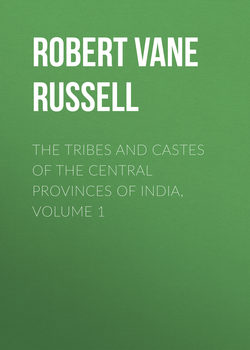Читать книгу The Tribes and Castes of the Central Provinces of India, Volume 1 - Robert Vane Russell - Страница 5
Part I.
Introductory Essay on Caste
Introductory Essay on Caste
2. Constitution of the population
ОглавлениеUp to a few centuries ago the Central Provinces remained outside the sphere of Hindu and Muhammadan conquest. To the people of northern India it was known as Gondwāna, an unexplored country of inaccessible mountains and impenetrable forests, inhabited by the savage tribes of Gonds from whom it took its name. Hindu kingdoms were, it is true, established over a large part of its territory in the first centuries of our era, but these were not accompanied by the settlement and opening out of the country, and were subsequently subverted by the Dravidian Gonds, who perhaps invaded the country in large numbers from the south between the ninth and twelfth centuries. Hindu immigration and colonisation from the surrounding provinces occurred at a later period, largely under the encouragement and auspices of Gond kings. The consequence is that the existing population is very diverse, and is made up of elements belonging to many parts of India. The people of the northern Districts came from Bundelkhand and the Gangetic plain, and here are found the principal castes of the United Provinces and the Punjab. The western end of the Nerbudda valley and Betūl were colonised from Mālwa and Central India. Berār and the Nāgpur plain fell to the Marāthas, and one of the most important Marātha States, the Bhonsla kingdom, had its capital at Nāgpur. Cultivators from western India came and settled on the land, and the existing population are of the same castes as the Marātha country or Bombay. But prior to the Marātha conquest Berār and the Nimar District of the Central Provinces had been included in the Mughal empire, and traces of Mughal rule remain in a substantial Muhammadan element in the population. To the south the Chānda District runs down to the Godāvari river, and the southern tracts of Chānda and Bastar State are largely occupied by Telugu immigrants from Madras. To the east of the Nāgpur plain the large landlocked area of Chhattīsgarh in the upper basin of the Mahānadi was colonised at an early period by Hindus from the east of the United Provinces and Oudh, probably coming through Jubbulpore. A dynasty of the Haihaivansi Rājpūt clan established itself at Ratanpur, and owing to the inaccessible nature of the country, protected as it is on all sides by a natural rampart of hill and forest, was able to pursue a tranquil existence untroubled by the wars and political vicissitudes of northern India. The population of Chhattīsgarh thus constitutes to some extent a distinct social organism, which retained until quite recently many remnants of primitive custom. The middle basin of the Mahānadi to the east of Chhattīsgarh, comprising the Sambalpur District and adjoining States, was peopled by Uriyas from Orissa, and though this area has now been restored to its parent province, notices of its principal castes have been included in these volumes. Finally, the population contains a large element of the primitive or non-Aryan tribes, rich in variety, who have retired before the pressure of Hindu cultivators to its extensive hills and forests. The people of the Central Provinces may therefore not unjustly be considered as a microcosm of a great part of India, and conclusions drawn from a consideration of their caste rules and status may claim with considerable probability of success to be applicable to those of the Hindus generally. For the same reason the standard ethnological works of other Provinces necessarily rank as the best authorities on the castes of the Central Provinces, and this fact may explain and excuse the copious resort which has been made to them in these volumes.
